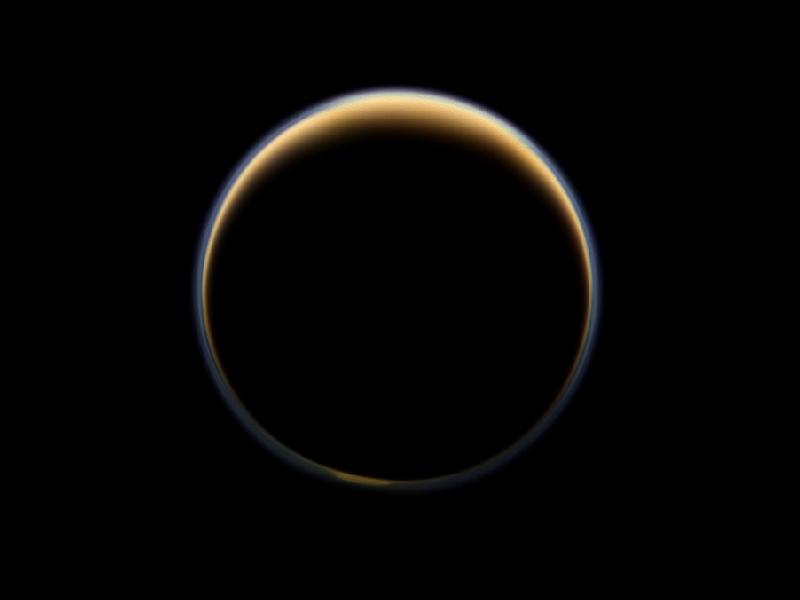Special delivery! See our visiting baby yaks (Dec. 20–Jan. 5) this holiday. Learn more
Science News
Tantalizing Titan
June 10, 2013

By Josh Roberts
Within our solar system, few worlds have much in common with Earth. Sure, Venus is about the same size, and Mars may have once (billions of years ago) resembled Earth in terms of its chemistry… But in many ways, Titan, the largest moon of Saturn, seems to be the world most similar to home.
This moon remained a mystery from the time of its discovery in 1655 until the Cassini/Huygens mission managed to peer beneath its veil of thick clouds in 2004. And that mission has made astounding discoveries.
Underneath its obscuring atmosphere, Titan looks shockingly similar to Earth: the lander saw dunes and valleys, as well as beaches and most surprisingly, seas!
We caught the glint of sunlight off these massive methane lakes before, but another near pass by Cassini has allowed us to make a radar map of the topography of Titan’s surface to get a sense of the depth of these alien oceans. It also provided a chance to build upon our understanding of how mountains and valleys here on Earth affect weather patterns around them.
And Cassini has also helped us understand Titan’s unusual atmosphere. A recent NASA press release describes how the moon forms a chemical mix near the surface “like L.A. smog on steroids.” The presence of complex aerosols has long puzzled scientists, but Cassini’s data provided clues to identify the missing link in the process: polycyclic aromatic hydrocarbons (PAHs). (The Academy’s planetarium director recently blogged about a diagram that accompanied that press release.)
Cassini is approaching ten years in orbit around the ringed planet, and its work continues. A future objective is to determine if waves occur on any of Titan’s three largest seas, not too far a stretch given the observations of massive dunes sculpted by wind, but astronomers are still working to piece together the delicate balance of wind, temperature, chemical composition, and viscosity of these alien shores.
Every pass gives us more information about Titan’s clouds and the world beneath them—fleshing out our knowledge of this most familiar-seeming moon.
Josh Roberts is a program presenter and astronomer at the California Academy of Sciences. He also contributes content to Morrison Planetarium productions.
Image: NASA/JPL-Caltech/SSI